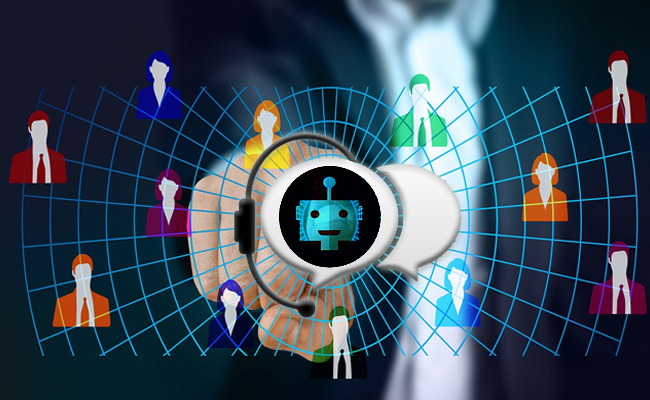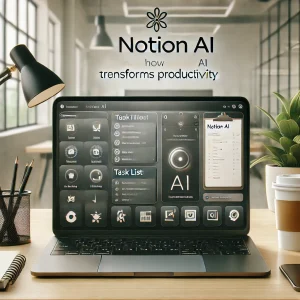How Chatbot AI is Revolutionizing Customer Support in 2024
In 2024, chatbot AI is transforming customer support, offering businesses unprecedented opportunities to enhance their customer interactions and streamline service operations. This blog post delves into how chatbot AI is reshaping the landscape, exploring key trends, best practices, and real-world success stories.
Introduction to Chatbot AI in Customer Support
Chatbot AI technology has come a long way since its inception. Initially designed to handle basic inquiries and automate routine tasks, modern chatbots have evolved into sophisticated systems capable of managing complex interactions. These advanced chatbots leverage artificial intelligence (AI) to understand and process natural language, enabling them to engage in meaningful conversations with customers.

Moreover, the role of customer support is critical in any business. It is not just about resolving issues; it’s about creating positive experiences that build long-term relationships. As businesses strive to meet customer expectations for fast, efficient, and personalized service, chatbot AI has emerged as a game-changer. Consequently, it offers scalable solutions that cater to these demands.
Key Trends in Chatbot AI for 2024
Increased Use of Natural Language Processing (NLP)
Natural Language Processing (NLP) is at the heart of modern chatbot AI. NLP enables chatbots to comprehend and respond to human language in a more natural and intuitive way. In 2024, advancements in NLP are making chatbots more accurate and contextually aware. For instance, they can now understand nuances, slang, and varied sentence structures, leading to more meaningful and relevant interactions.
As a result, chatbots equipped with advanced NLP can handle complex queries, understand the context of conversations, and provide precise responses. This evolution, in turn, enhances user satisfaction by minimizing misunderstandings and improving the overall quality of customer support.
Integration with Omnichannel Platforms
Omnichannel support is a critical component of a seamless customer experience. In 2024, chatbots are increasingly being integrated with various communication channels, including social media, email, and live chat. This integration ensures that customers receive consistent support across all platforms, which is essential for maintaining a cohesive brand experience.
By connecting chatbots to omnichannel platforms, businesses can provide a unified support experience. For example, a customer who starts a conversation on social media can seamlessly continue it via email or live chat without having to repeat information. Consequently, this integration not only enhances customer convenience but also helps businesses manage support more efficiently.
Personalization and Customer Experience
Personalization is a key factor in delivering exceptional customer support. In 2024, chatbots are utilizing customer data to offer tailored interactions. By analyzing past interactions, purchase history, and user preferences, chatbots can provide personalized recommendations and solutions.
For instance, if a customer frequently purchases specific products, a chatbot can suggest related items or offer special promotions. This level of personalization, therefore, improves the customer experience and drives higher engagement and conversion rates.
Best Practices for Implementing Chatbot AI

Designing Effective Conversational Flows
Creating effective conversational flows is crucial for ensuring that chatbots provide valuable assistance. Effective flows are designed to guide users through interactions smoothly and efficiently. This involves anticipating common customer queries, structuring conversations to address these queries, and ensuring that the chatbot can handle deviations gracefully.
To design effective conversational flows, start by mapping out common scenarios and user journeys. Use this information to create dialogue paths that lead to clear, actionable outcomes. Regularly reviewing and updating these flows based on user feedback and interaction data is also essential for continuously improving performance.
Monitoring and Analyzing Chatbot Performance
Monitoring and analyzing chatbot performance is essential for optimizing its effectiveness. Key metrics to track include response accuracy, user satisfaction, and resolution rates. Analyzing these metrics helps identify areas for improvement and ensures that the chatbot meets customer expectations.
For instance, if a chatbot frequently encounters issues with understanding specific queries, it may indicate a need for improved NLP capabilities. By regularly reviewing performance data, businesses can make informed decisions about updates and enhancements.
Ensuring Data Privacy and Security
As chatbots handle sensitive customer information, ensuring data privacy and security is paramount. Businesses must implement robust security measures to protect customer data from breaches and misuse. This includes encrypting communications, adhering to data protection regulations, and implementing secure authentication methods.
Additionally, businesses should be transparent about data usage and provide customers with options to manage their data preferences. By prioritizing data privacy, businesses can build trust and confidence with their customers.
Case Studies: Success Stories of Chatbot AI in Action
Case Study 1: E-commerce Industry
In the e-commerce sector, chatbot AI has revolutionized customer support by providing instant assistance and personalized recommendations. For example, a leading online retailer implemented a chatbot that helps customers find products, track orders, and resolve issues in real time.
The results were impressive: the retailer saw a significant reduction in response times, increased customer satisfaction, and higher sales conversions. Consequently, the chatbot’s ability to handle high volumes of queries efficiently allowed customer support agents to focus on more complex issues, further enhancing the overall customer experience.

Case Study 2: Financial Services Sector
In the financial services sector, chatbot AI has been instrumental in improving customer service efficiency. A major bank introduced a chatbot to handle routine queries related to account balances, transaction history, and loan applications.
The chatbot’s success was evident in the improved efficiency of the bank’s customer support operations. It reduced the workload on human agents, decreased response times, and provided customers with quick and accurate information. Additionally, the chatbot’s integration with the bank’s security systems ensured that customer data was handled securely.
Future Outlook: What’s Next for Chatbot AI?
As we look to the future, chatbot AI is poised to continue evolving with emerging technologies. Advances in machine learning, AI, and data analytics will further enhance chatbot capabilities, making them even more effective at understanding and responding to customer needs.
Future developments may include more sophisticated conversational abilities, greater integration with other AI technologies, and enhanced personalization features. Consequently, businesses that stay ahead of these trends will be well-positioned to leverage chatbot AI for continued success in customer support.
Conclusion
Chatbot AI is revolutionizing customer support by offering advanced capabilities that enhance efficiency, personalization, and overall customer experience. By staying informed about the latest trends and best practices, businesses can effectively implement chatbot technology and reap the benefits of improved customer interactions. As chatbot AI continues to evolve, it will undoubtedly play an increasingly central role in shaping the future of customer support.














Post Comment